Complete Solutions to Comprehension of chapter ORGANIC REACTION MECHANISM of Class 11 book with complete answers and questions
| Class 11 | CHEMISTRY |
| Chapter | ORGANIC REACTION MECHANISM |
| CENGAGE CHEMISTRY | Comprehension |
| Number Of Questions | 36 |
| Academic Year | 2023-24 |
The leaving group is that functional group which is ejected with `overline e^, s` of the `sigma` -bond in a reaction. Better the leaving group, faster is the reaction. The relative leaving ability of the leaving group `X` in `(R - X)` is increased by :
(i) The polarisability of `(R - X)` bond.
(ii) The stability of `X^(Ө)`.
(iii) The degree of stabilisation through solvation of `X`.
(iv) The strength of `(R - X)` bond.
The leaving group tendency is also called fugacity.
Which statement is wrong ?
View SolutionThe leaving group is that functional group which is ejected with `overline e^, s` of the `sigma` -bond in a reaction. Better the leaving group, faster is the reaction. The relative leaving ability of the leaving group `X` in `(R - X)` is increased by :
(i) The polarisability of `(R - X)` bond.
(ii) The stability of `X^(Ө)`.
(iii) The degree of stabilisation through solvation of `X`.
(iv) The strength of `(R - X)` bond.
The leaving group tendency is also called fugacity.
Which statement is correct ?
View SolutionThe leaving group is that functional group which is ejected with `overline e^, s` of the `sigma` -bond in a reaction. Better the leaving group, faster is the reaction. The relative leaving ability of the leaving group `X` in `(R - X)` is increased by :
(i) The polarisability of `(R - X)` bond.
(ii) The stability of `X^(Ө)`.
(iii) The degree of stabilisation through solvation of `X`.
(iv) The strength of `(R - X)` bond.
The leaving group tendency is also called fugacity.
Which one of the followingd has the highest fugacity ?
View SolutionThe leaving group is that functional group which is ejected with `overline e^, s` of the `sigma` -bond in a reaction. Better the leaving group, faster is the reaction. The relative leaving ability of the leaving group `X` in `(R - X)` is increased by :
(i) The polarisability of `(R - X)` bond.
(ii) The stability of `X^(Ө)`.
(iii) The degree of stabilisation through solvation of `X`.
(iv) The strength of `(R - X)` bond.
The leaving group tendency is also called fugacity.
Which of the following undergoes `SN` reaction easily ?
View SolutionThe leaving group is that functional group which is ejected with `overline e^, s` of the `sigma` -bond in a reaction. Better the leaving group, faster is the reaction. The relative leaving ability of the leaving group `X` in `(R - X)` is increased by :
(i) The polarisability of `(R - X)` bond.
(ii) The stability of `X^(Ө)`.
(iii) The degree of stabilisation through solvation of `X`.
(iv) The strength of `(R - X)` bond.
The leaving group tendency is also called fugacity.
Which statement is correct ?
View SolutionThe leaving group is that functional group which is ejected with `overline e^, s` of the `sigma` -bond in a reaction. Better the leaving group, faster is the reaction. The relative leaving ability of the leaving group `X` in `(R - X)` is increased by :
(i) The polarisability of `(R - X)` bond.
(ii) The stability of `X^(Ө)`.
(iii) The degree of stabilisation through solvation of `X`.
(iv) The strength of `(R - X)` bond.
The leaving group tendency is also called fugacity.
Which of the following is the wrong order of fugacity ?
View SolutionThe rate of `SN^2` reaction depends on the effectiveness of the nucleophile in ejecting the leaving group. Nucleophilicity is the affinity for `C` atom, while basicity is the affinity for proton.
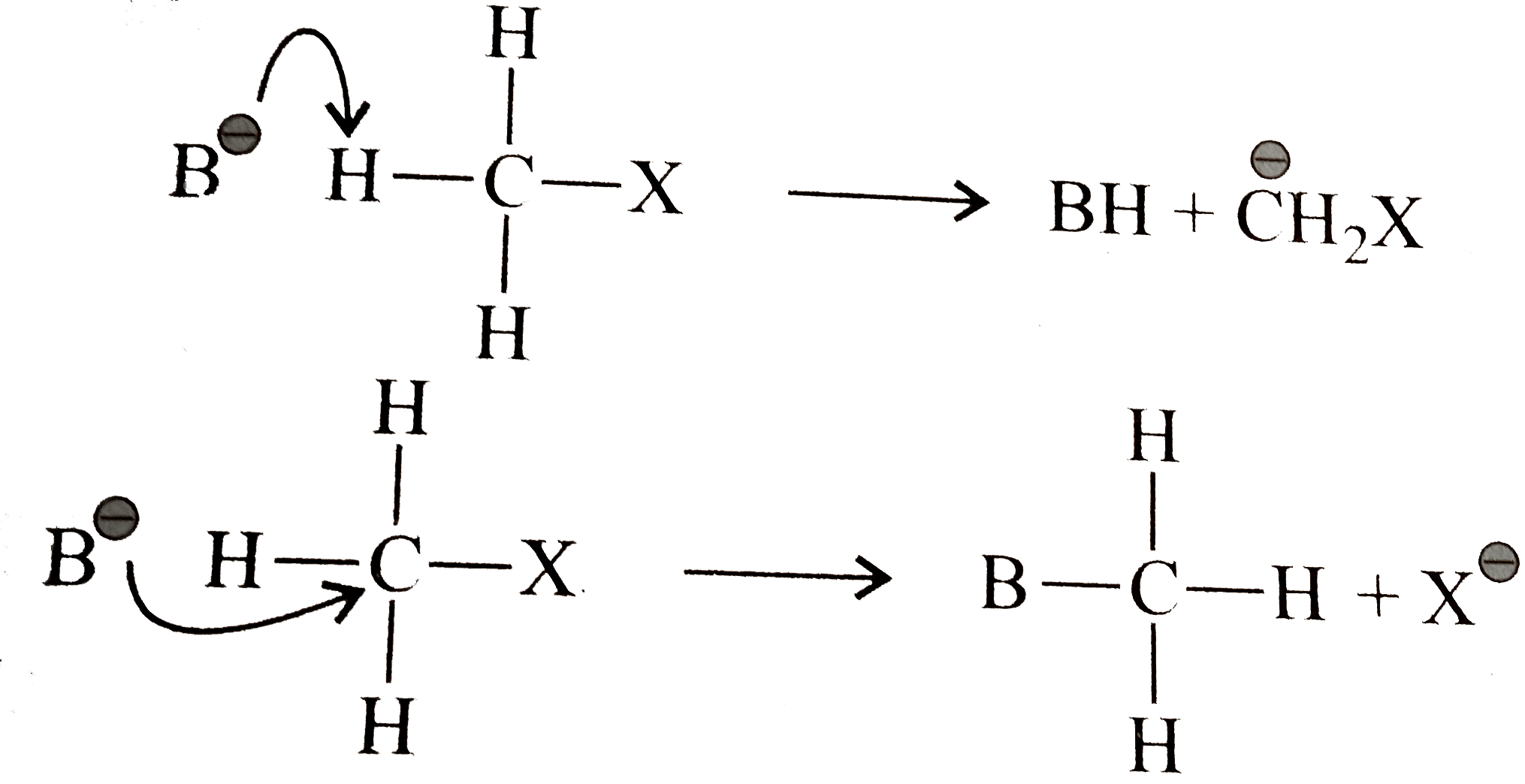
In both cases, a new bond is formed. If a new bond is formed between the anion and proton, the specied acts as a base. If a new bond is formed between the anion and `C` atom, the species acts as nucleophile.
Which of the following statements is wrong ?
View SolutionThe rate of `SN^2` reaction depends on the effectiveness of the nucleophile in ejecting the leaving group. Nucleophilicity is the affinity for `C` atom, while basicity is the affinity for proton.
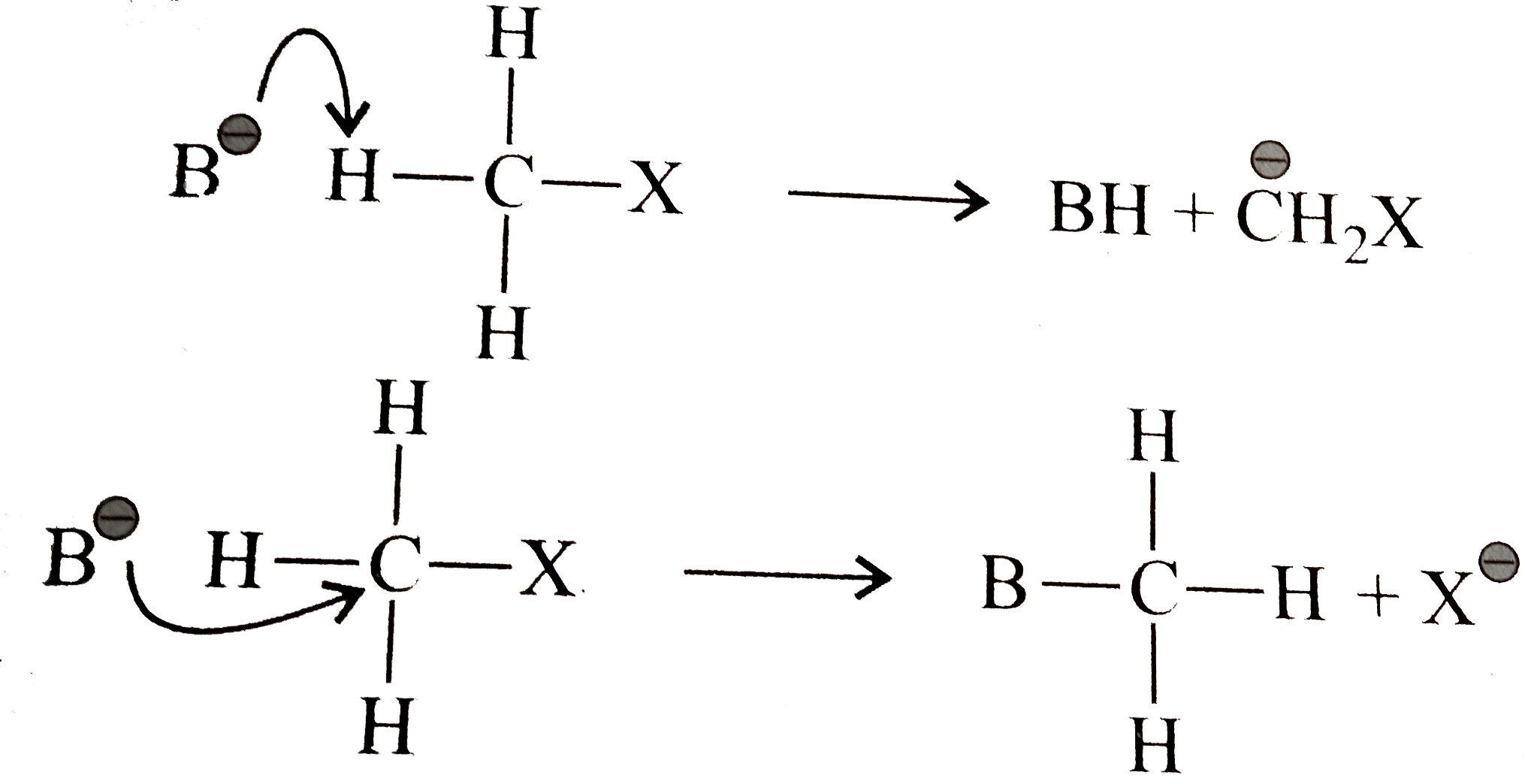
In both cases, a new bond is formed. If a new bond is formed between the anion and proton, the specied acts as a base. If a new bond is formed between the anion and `C` atom, the species acts as nucleophile.
Which of the following statements is wrong ? Nucleophile order of the following in weakly polar aprotic solvents, e.g., acetone is :
View SolutionThe rate of `SN^2` reaction depends on the effectiveness of the nucleophile in ejecting the leaving group. Nucleophilicity is the affinity for `C` atom, while basicity is the affinity for proton.
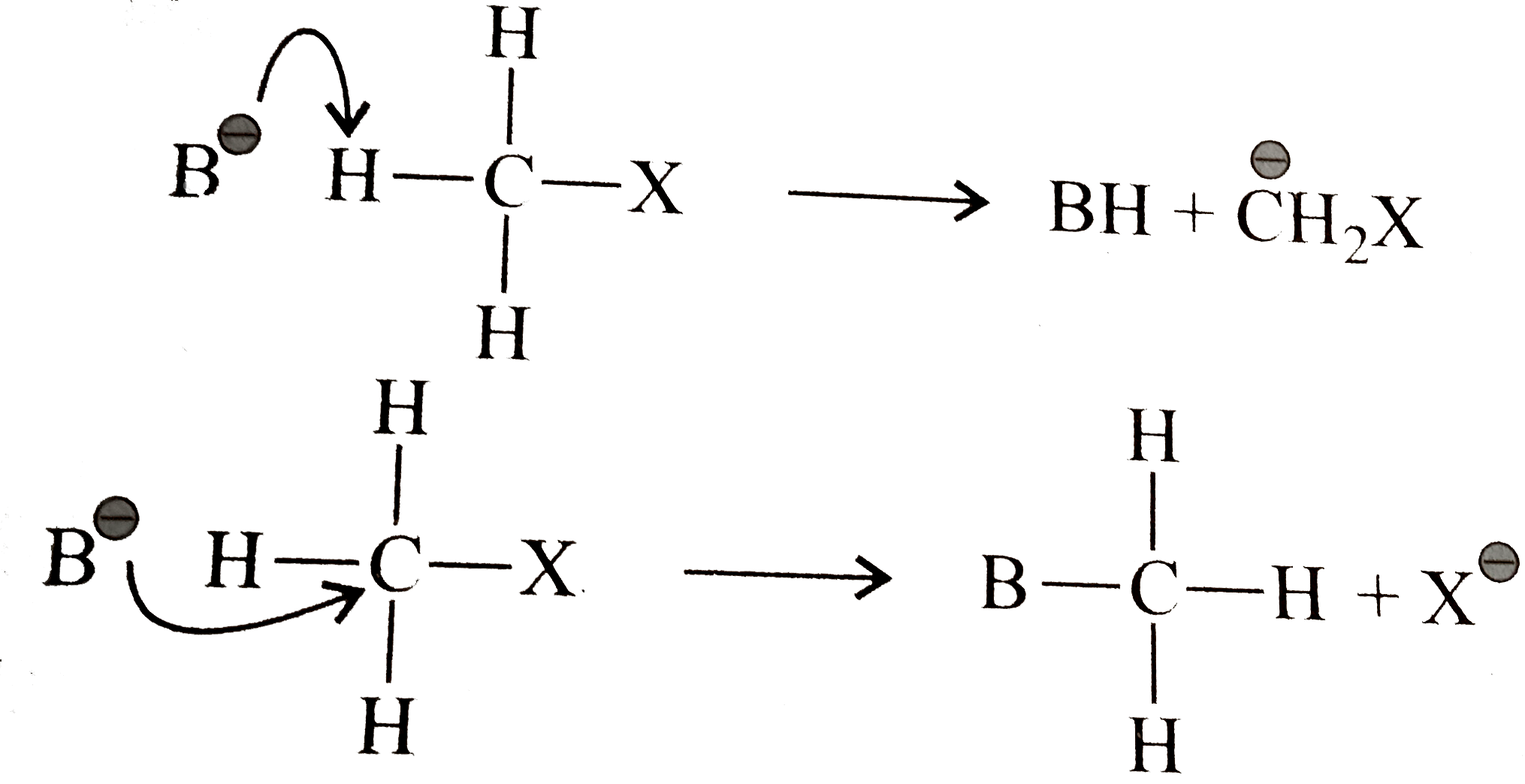
In both cases, a new bond is formed. If a new bond is formed between the anion and proton, the specied acts as a base. If a new bond is formed between the anion and `C` atom, the species acts as nucleophile.
Which of the following is wrong ?
View SolutionThe rate of `SN^2` reaction depends on the effectiveness of the nucleophile in ejecting the leaving group. Nucleophilicity is the affinity for `C` atom, while basicity is the affinity for proton.
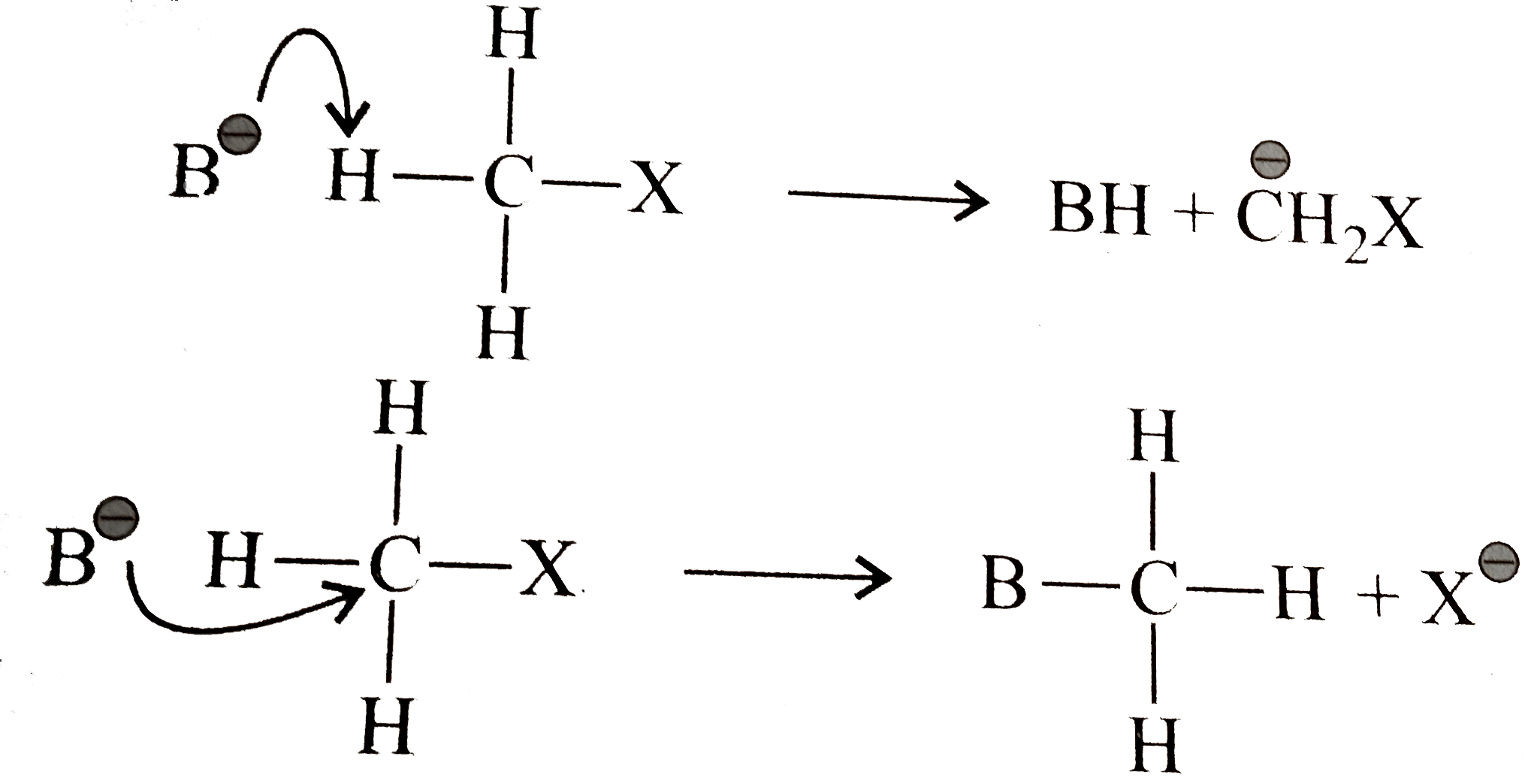
In both cases, a new bond is formed. If a new bond is formed between the anion and proton, the specied acts as a base. If a new bond is formed between the anion and `C` atom, the species acts as nucleophile.
Which of the following compounds gives `SN^1, SN^2`, and `SN^2` mechanisms ?
View Solution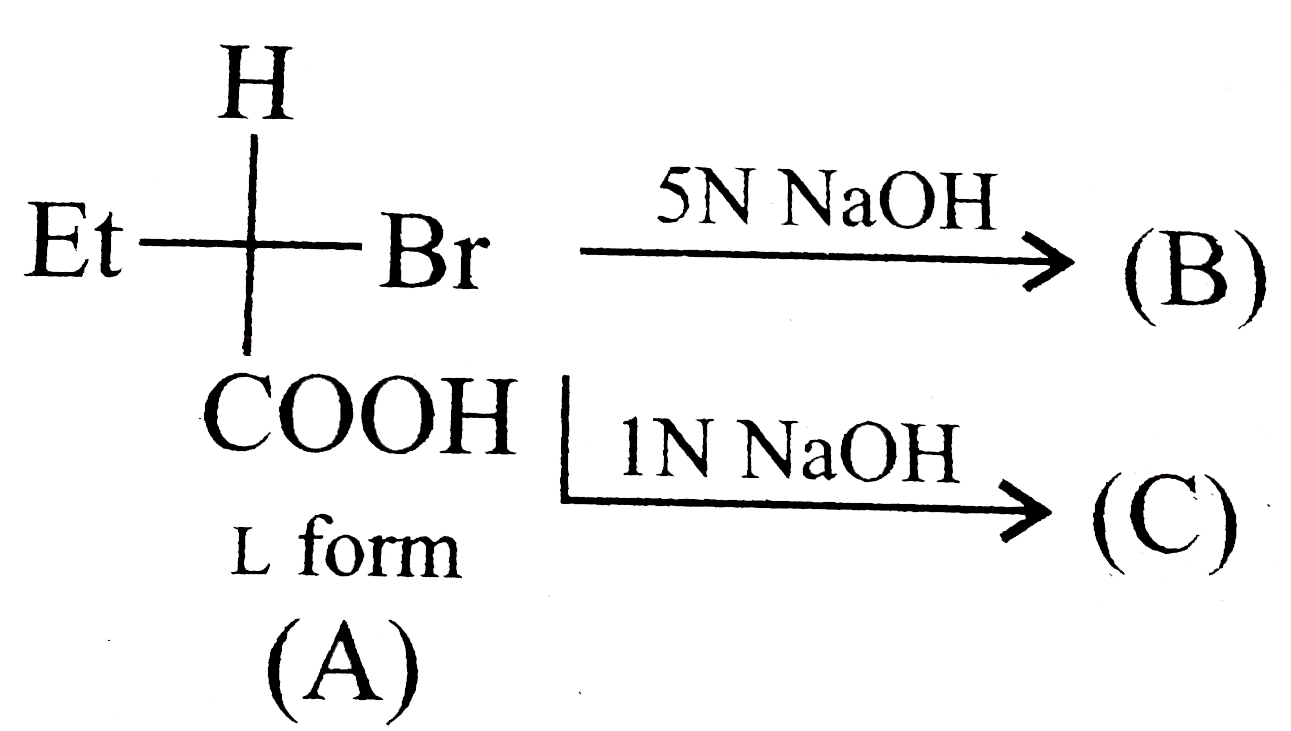
Which statement is wrong in the formation of `(B)` from `(A)`.
View Solution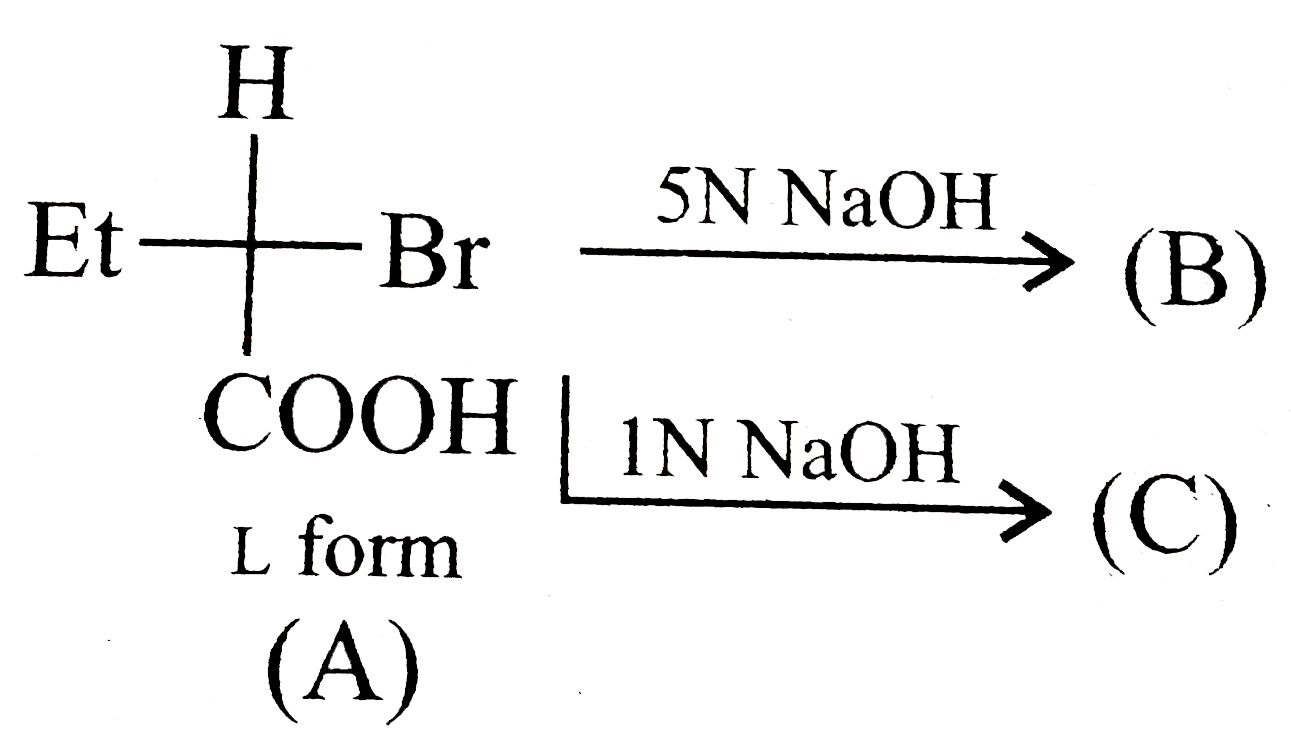
Which is correct in the formation of `(c)` from `(A)` ?
View Solution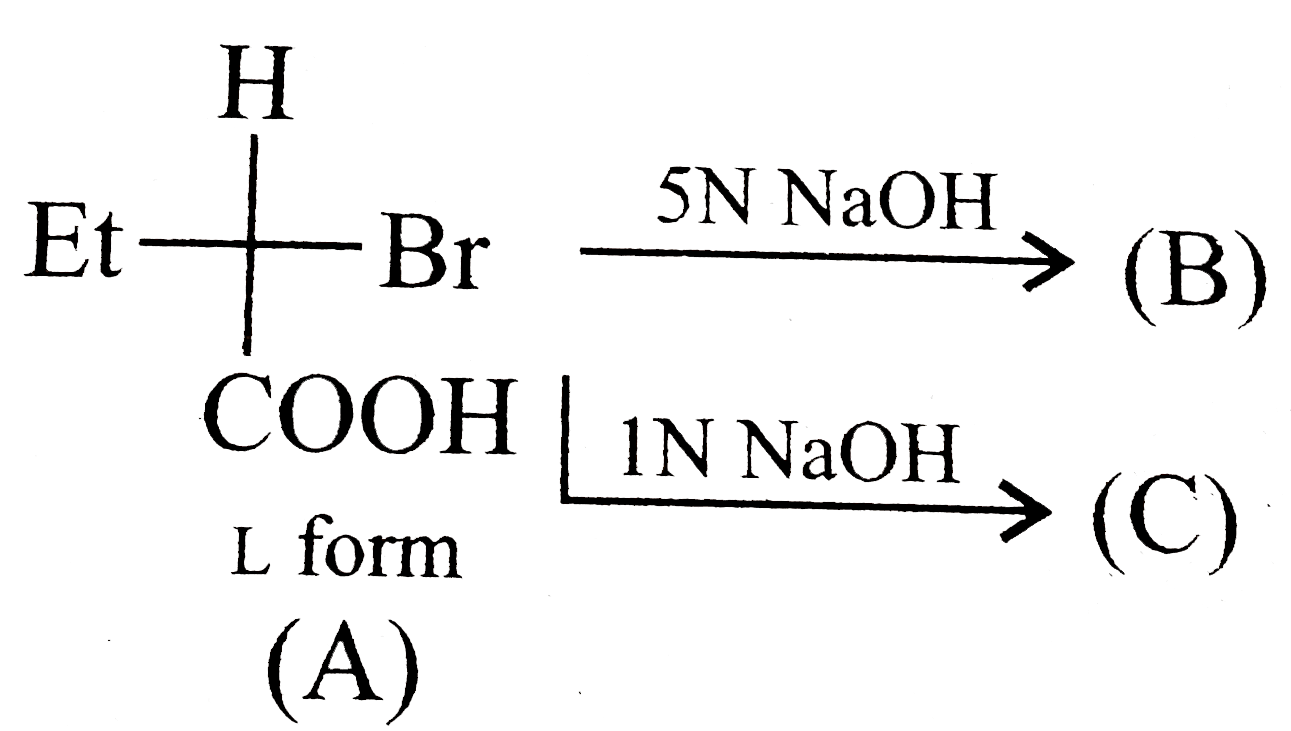
Which statement is wrong in the formation of `(c)` from `(A)` ?
View SolutionIn elimination reaction, the major product is either Saytzeff (more-substituted alkene) or Hofmann product (less-substituted alkene) depending on the nature of the substrate and the nature of the base.
Which statement is correct about the reactions ?
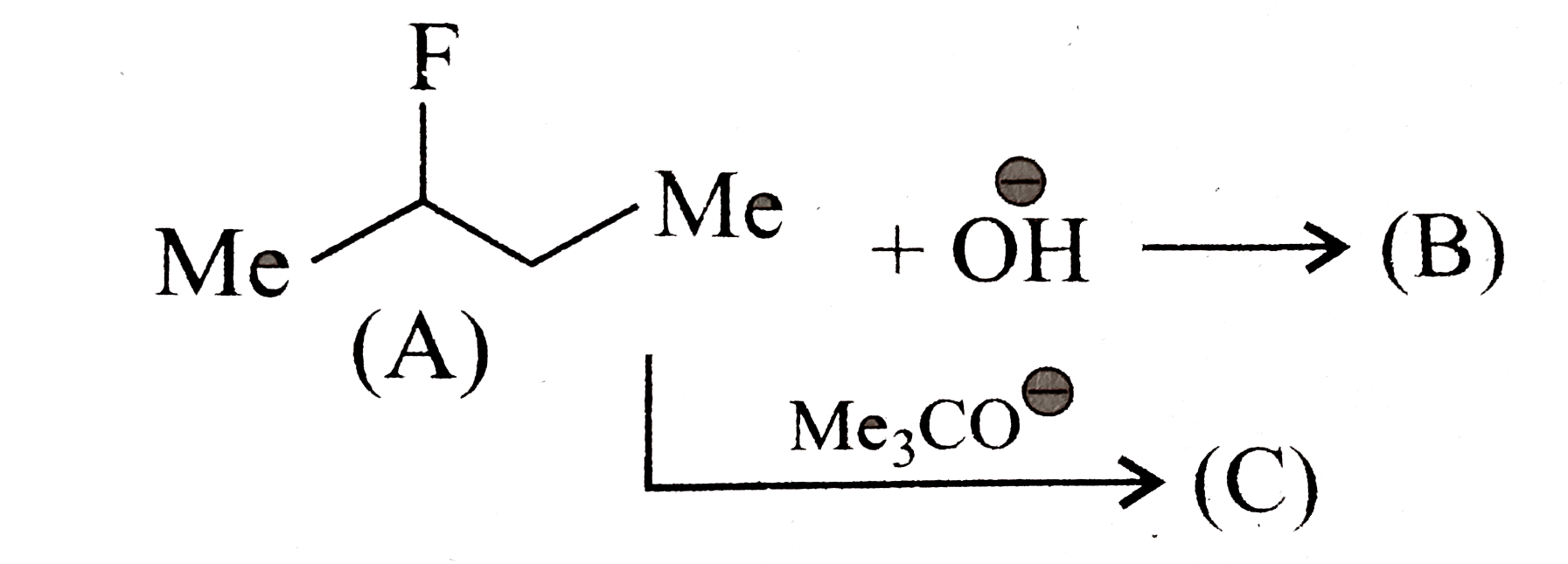
View SolutionIn elimination reaction, the major product is either Saytzeff (more-substituted alkene) or Hofmann product (less-substituted alkene) depending on the nature of the substrate and the nature of the base.
Refer to Q.No.14 and find out which statement is correct ?
View SolutionIn elimination reaction, the major product is either Saytzeff (more-substituted alkene) or Hofmann product (less-substituted alkene) depending on the nature of the substrate and the nature of the base.
Which statement is correct about the following reactions ?

View SolutionIn elimination reaction, the major product is either Saytzeff (more-substituted alkene) or Hofmann product (less-substituted alkene) depending on the nature of the substrate and the nature of the base.
Which statement is wrong about the given reaction.
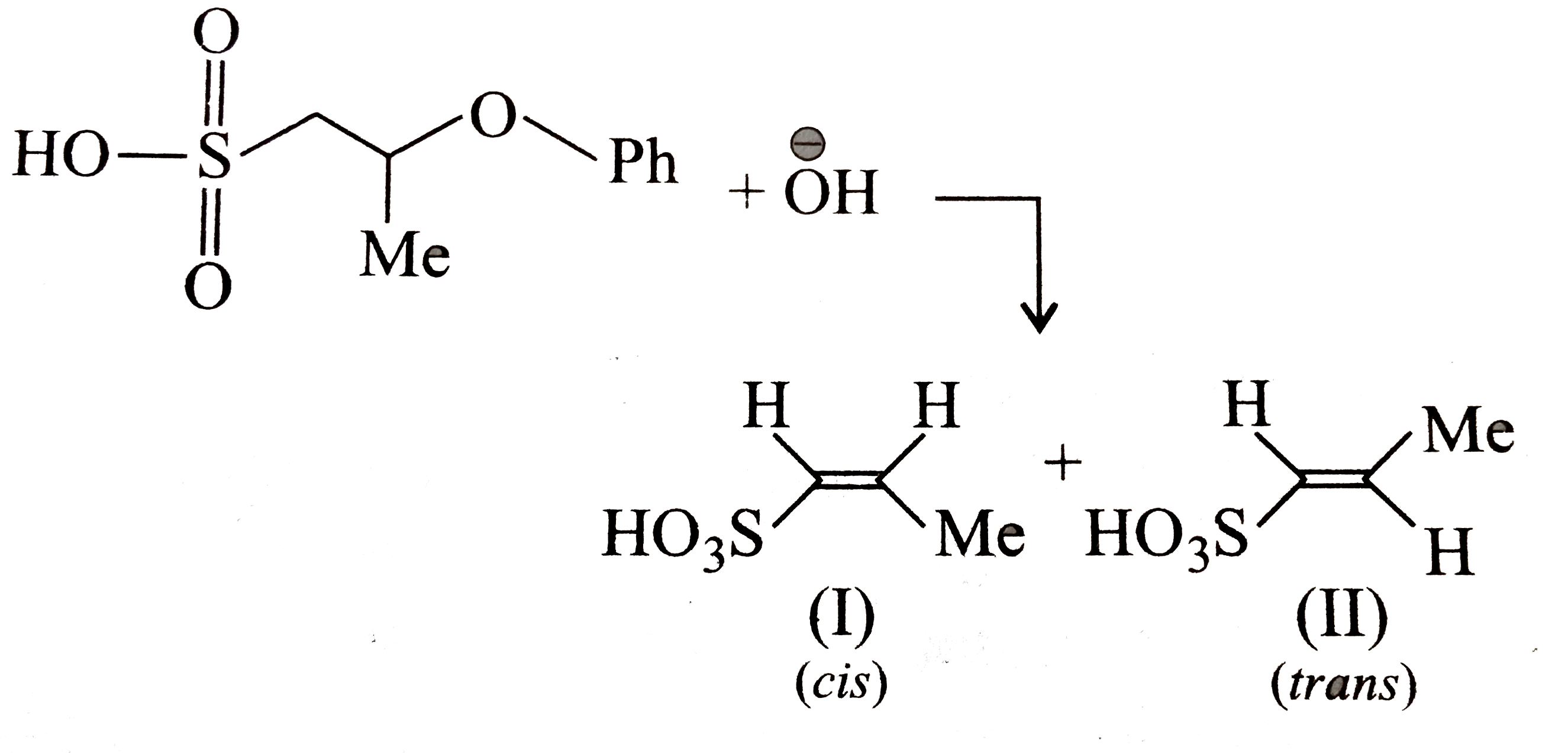 .
.
View SolutionIn elimination reaction, the major product is either Saytzeff (more-substituted alkene) or Hofmann product (less-substituted alkene) depending on the nature of the substrate and the nature of the base.
Which statement is wrong about the given reaction ?
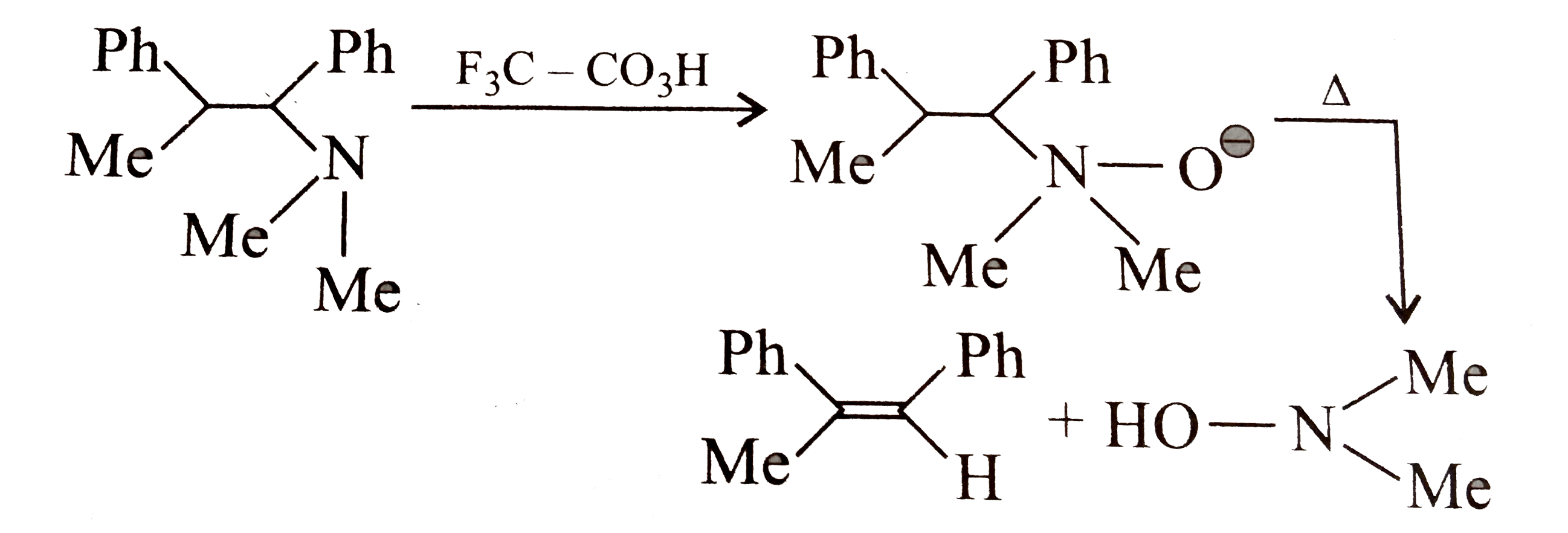 .
.
View SolutionConsider the following reactions :
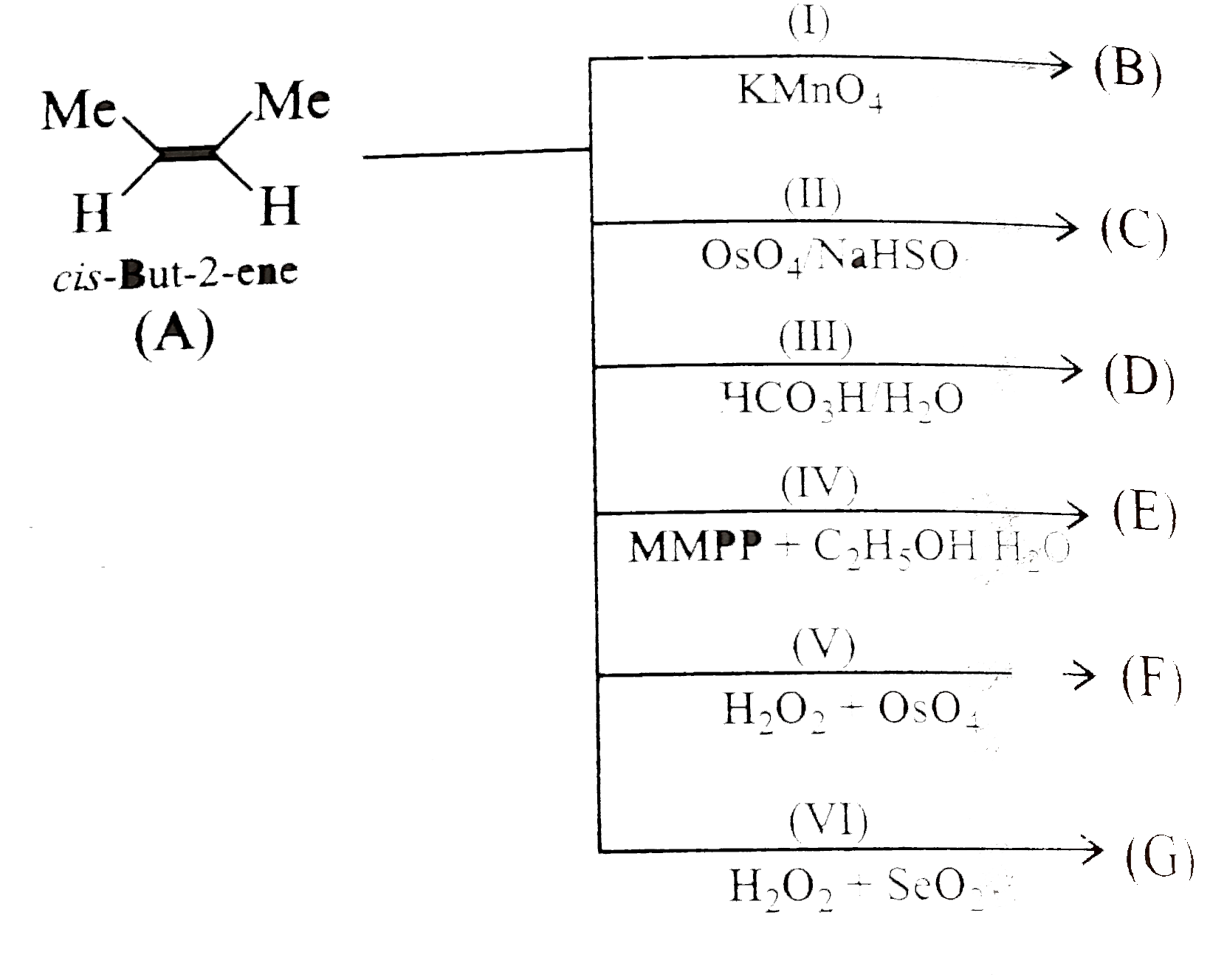
Which of the following are stereospecific reactions ?
View SolutionConsider the following reactions :
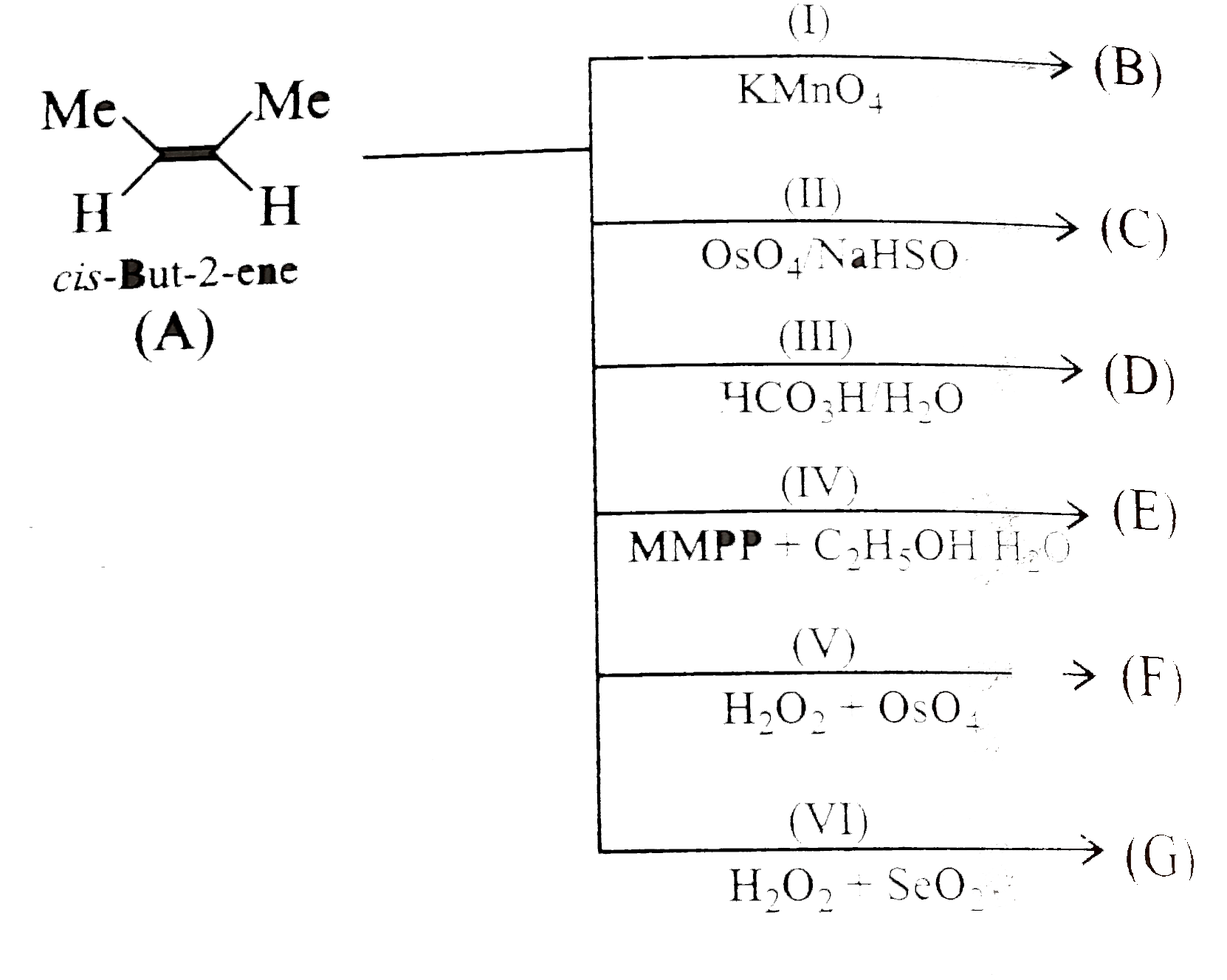
Which of the following regioselective reactions ?
View SolutionConsider the following reactions :
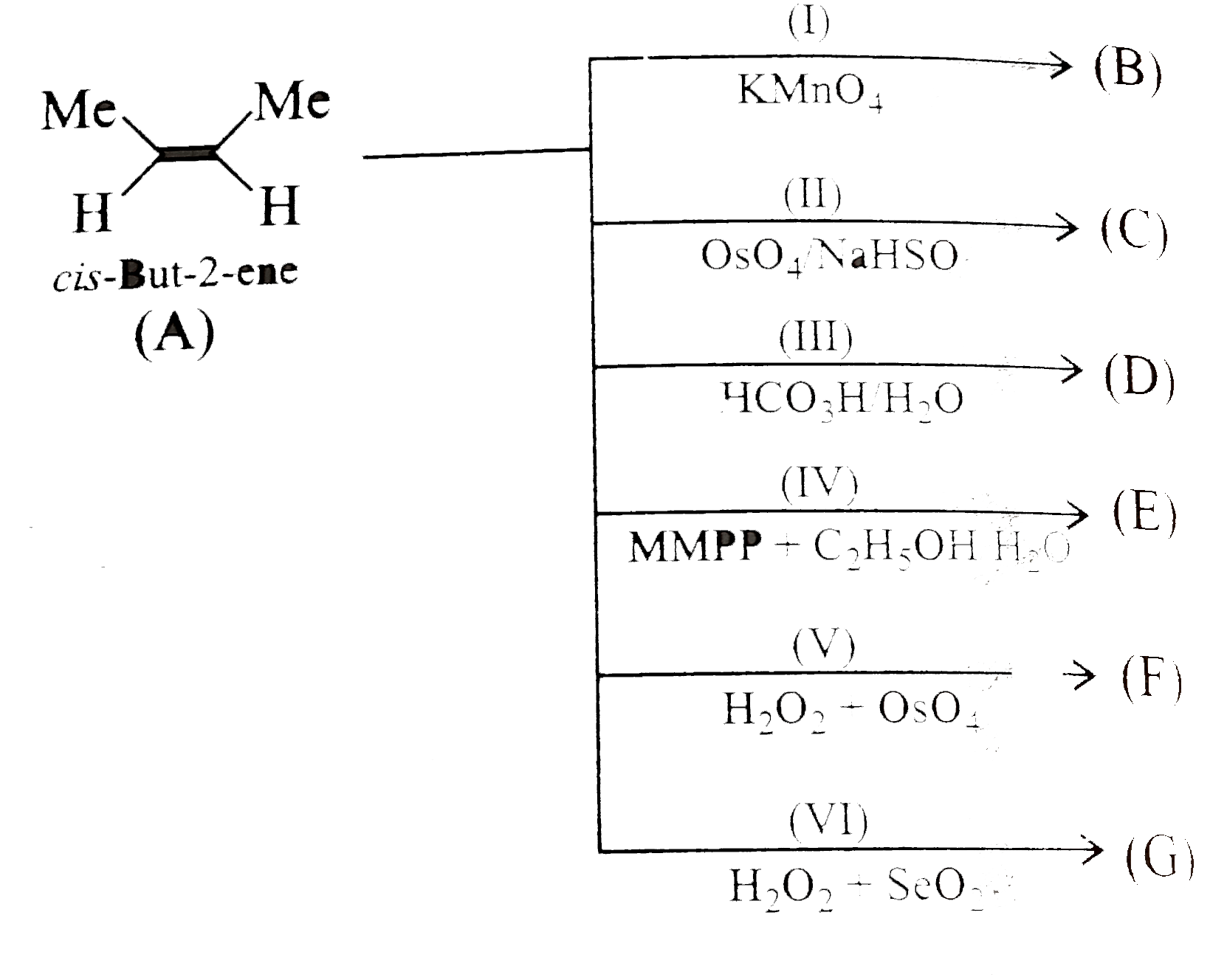
Syn-addition takes place in :
View SolutionConsider the following reactions :
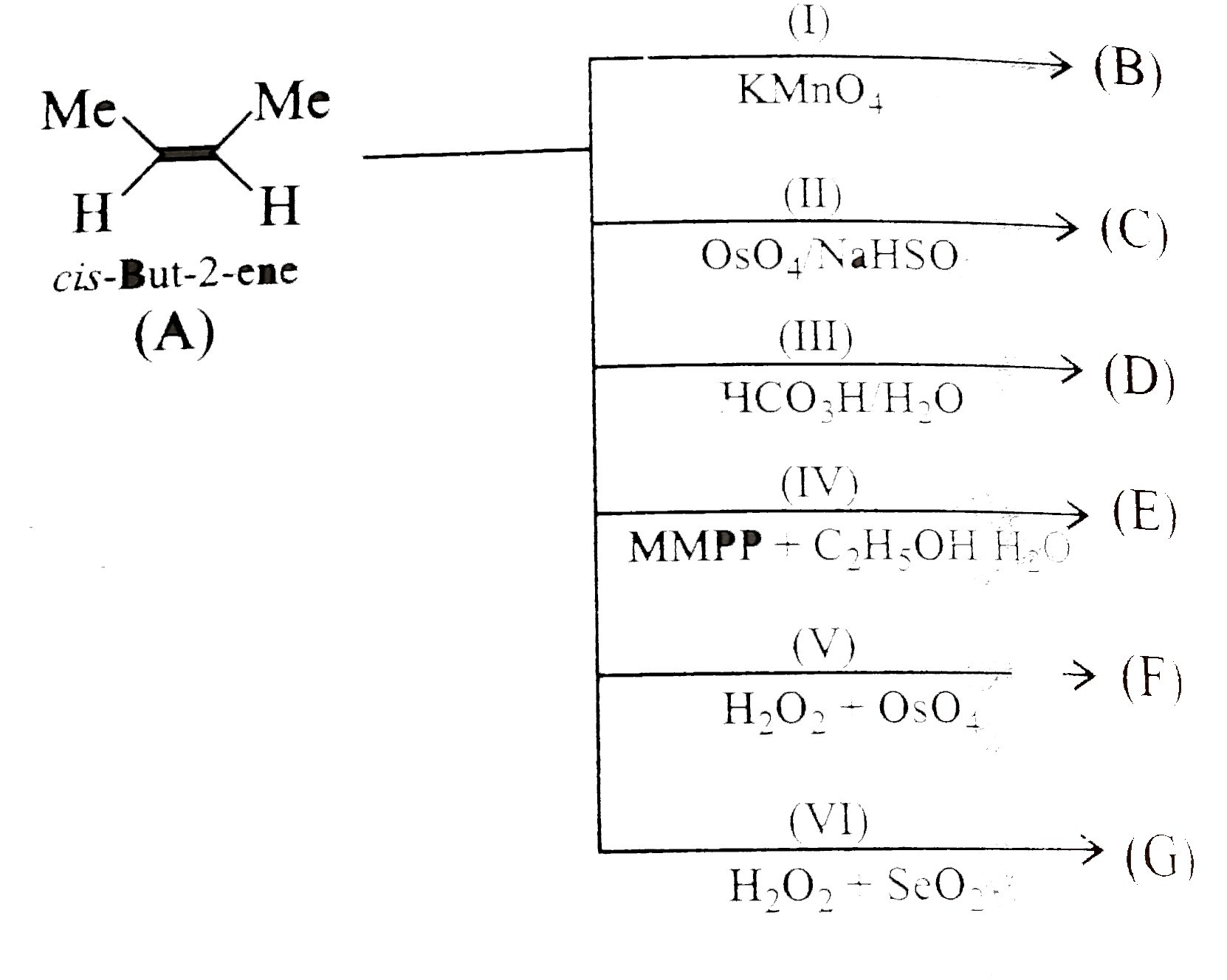
Anti-addition takes place in :
View SolutionConsider the following reactions :
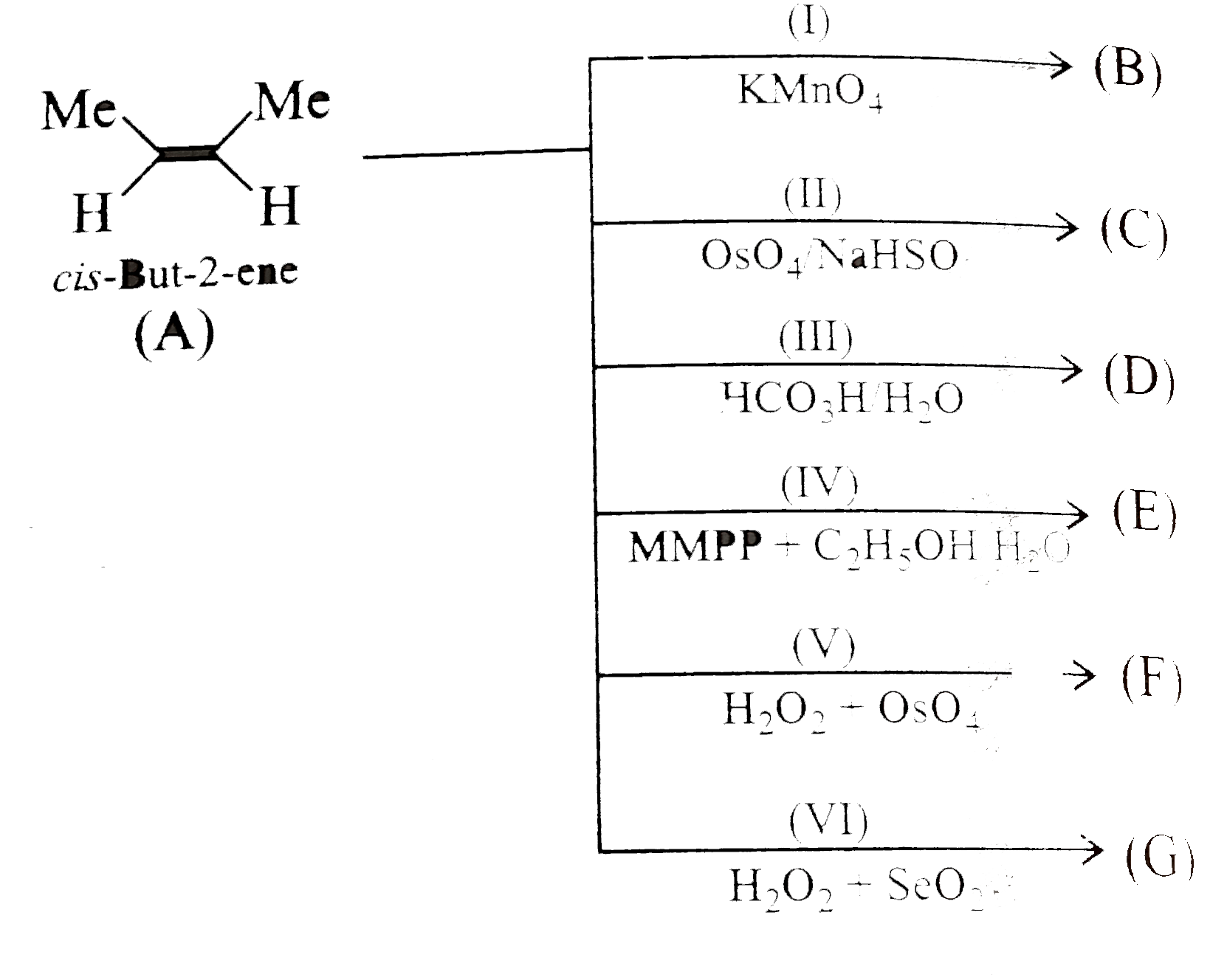
Meso-butan-2,3-diol is formed in :
View SolutionConsider the following reactions :

Racemic-butan-2,3-diol is formed in :
View SolutionConsider the following reactions :
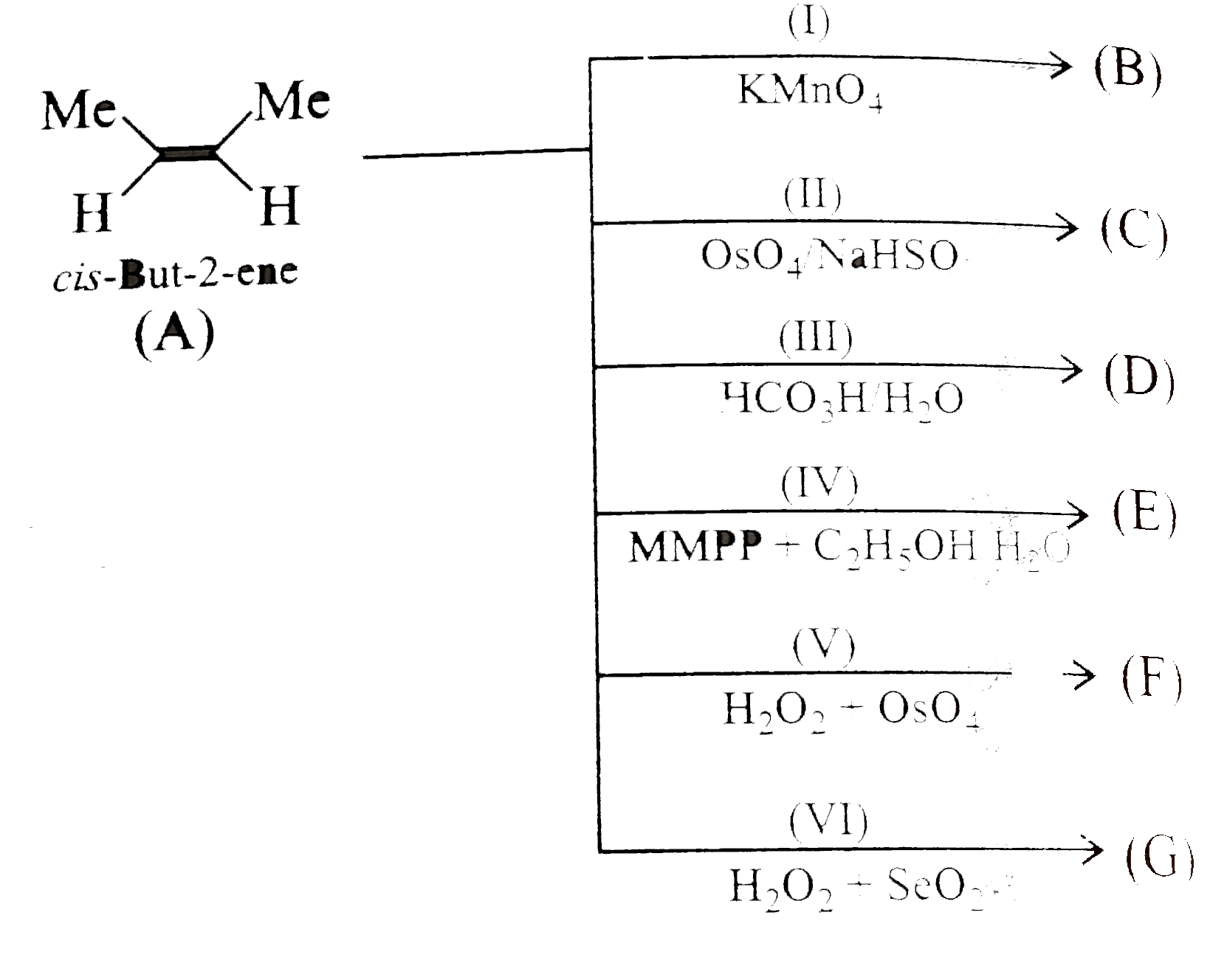
The name of structure of `MMPP` is :
View SolutionConsider the following reactions :

Which of the following are stereospecific reactions ?
View SolutionConsider the following reactions :

Which of the following regioselective reactions ?
View SolutionConsider the following reactions :

Syn-addition takes place in :
View SolutionConsider the following reactions :

Syn-addition takes place in :
View Solution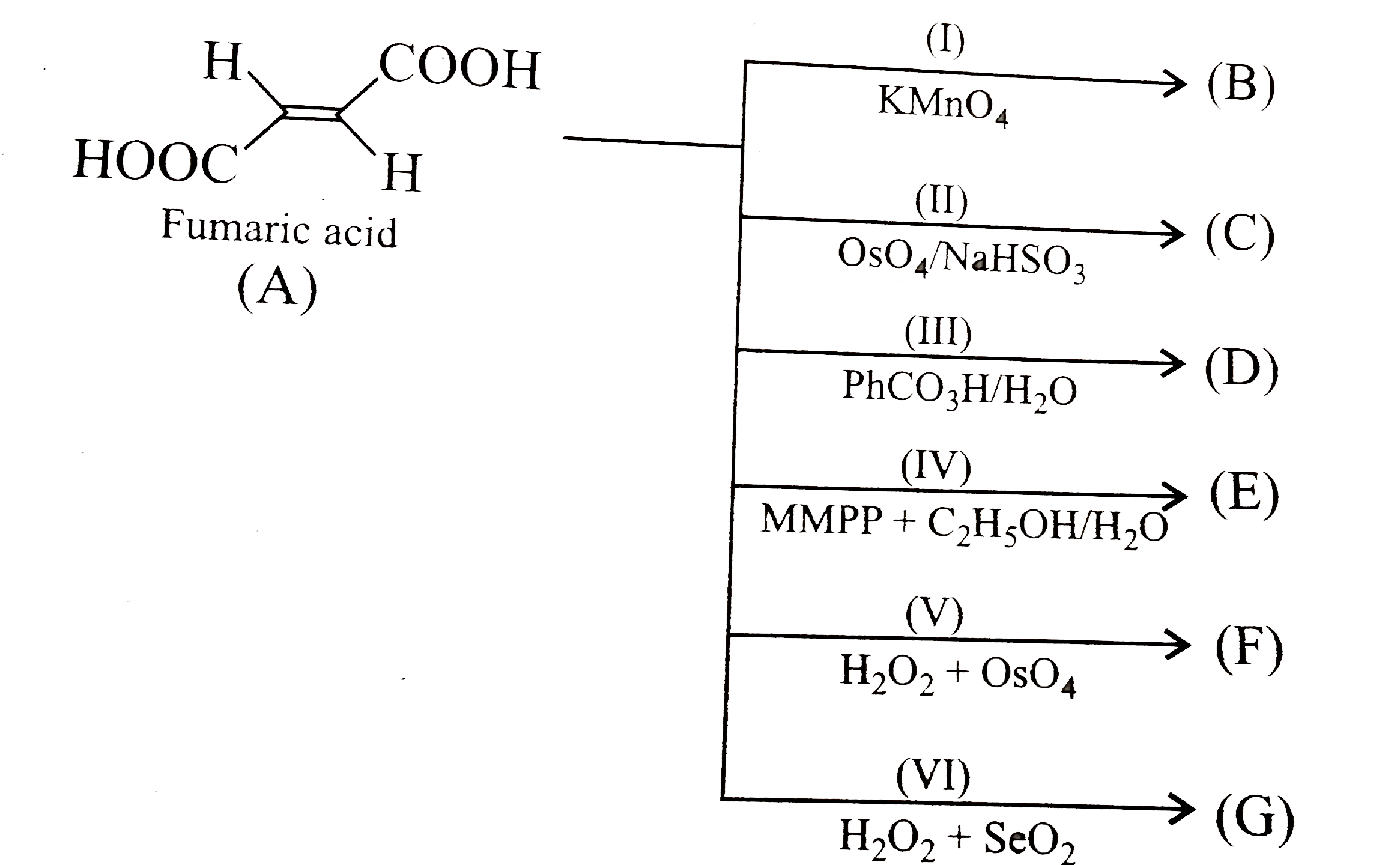
Meso-tartaric acid is formed in :
View Solution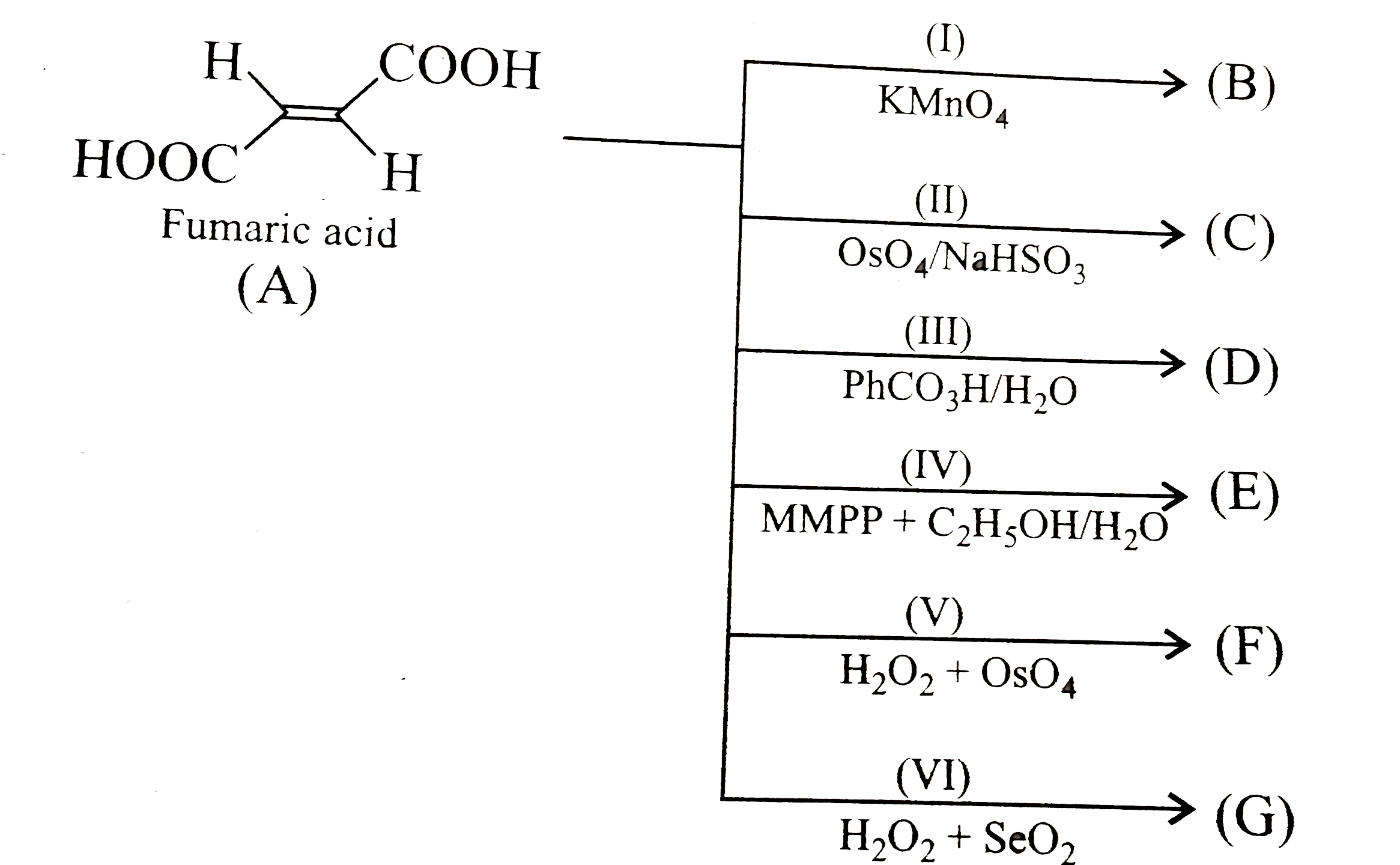
`(+-)` -Tartaric acid is formed in :
View SolutionConsider the following reactions :
`I Me- underset((A))(-=)-Me overset(Na+Liq. NH_(3))underset(EtOH)to (B)`
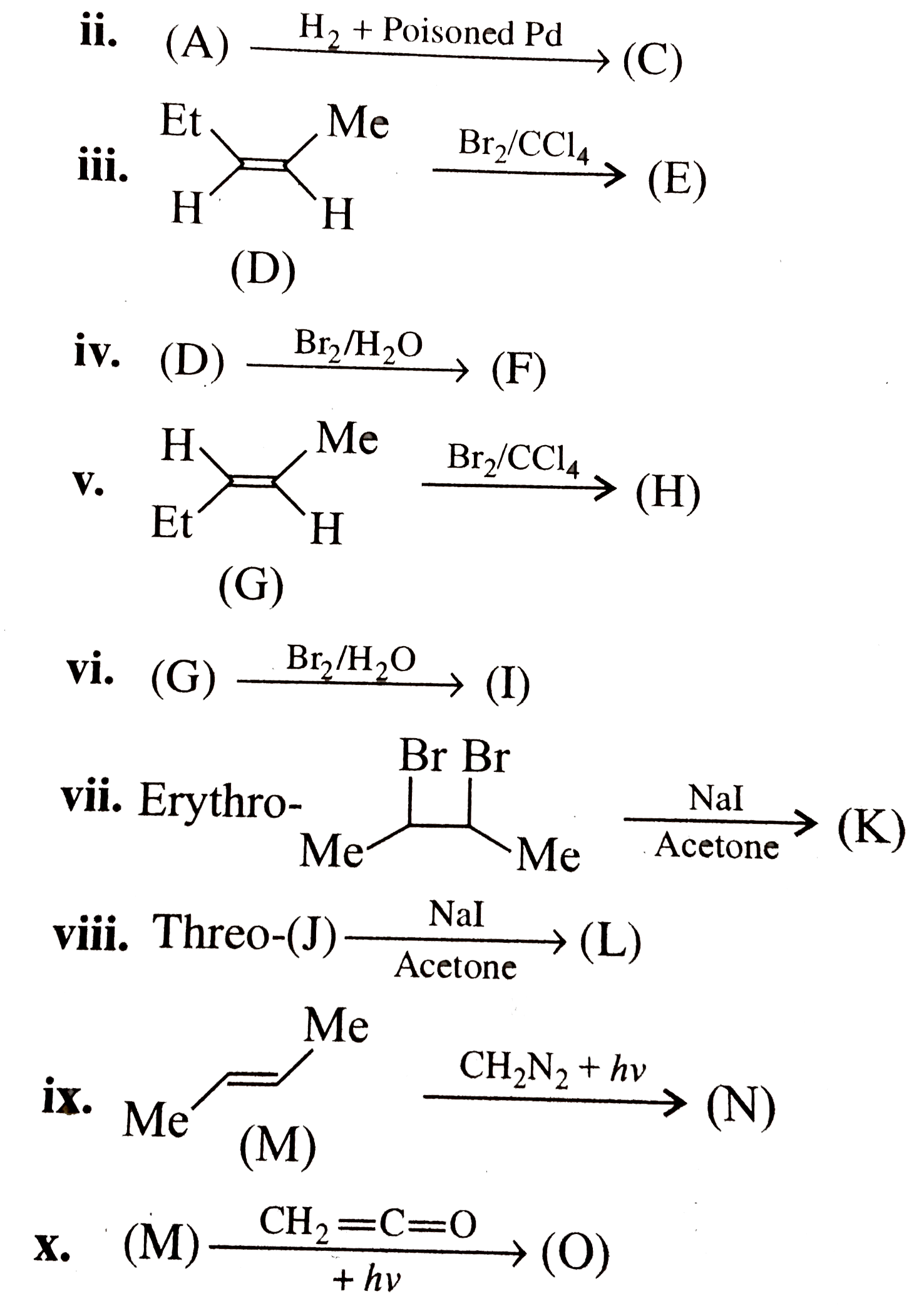 .
.
Which statement is wrong about the reactions (i) and (ii) ?
View SolutionConsider the following reactions :
`I Me- underset((A))(-=)-Me overset(Na+Liq. NH_(3))underset(EtOH)to (B)`
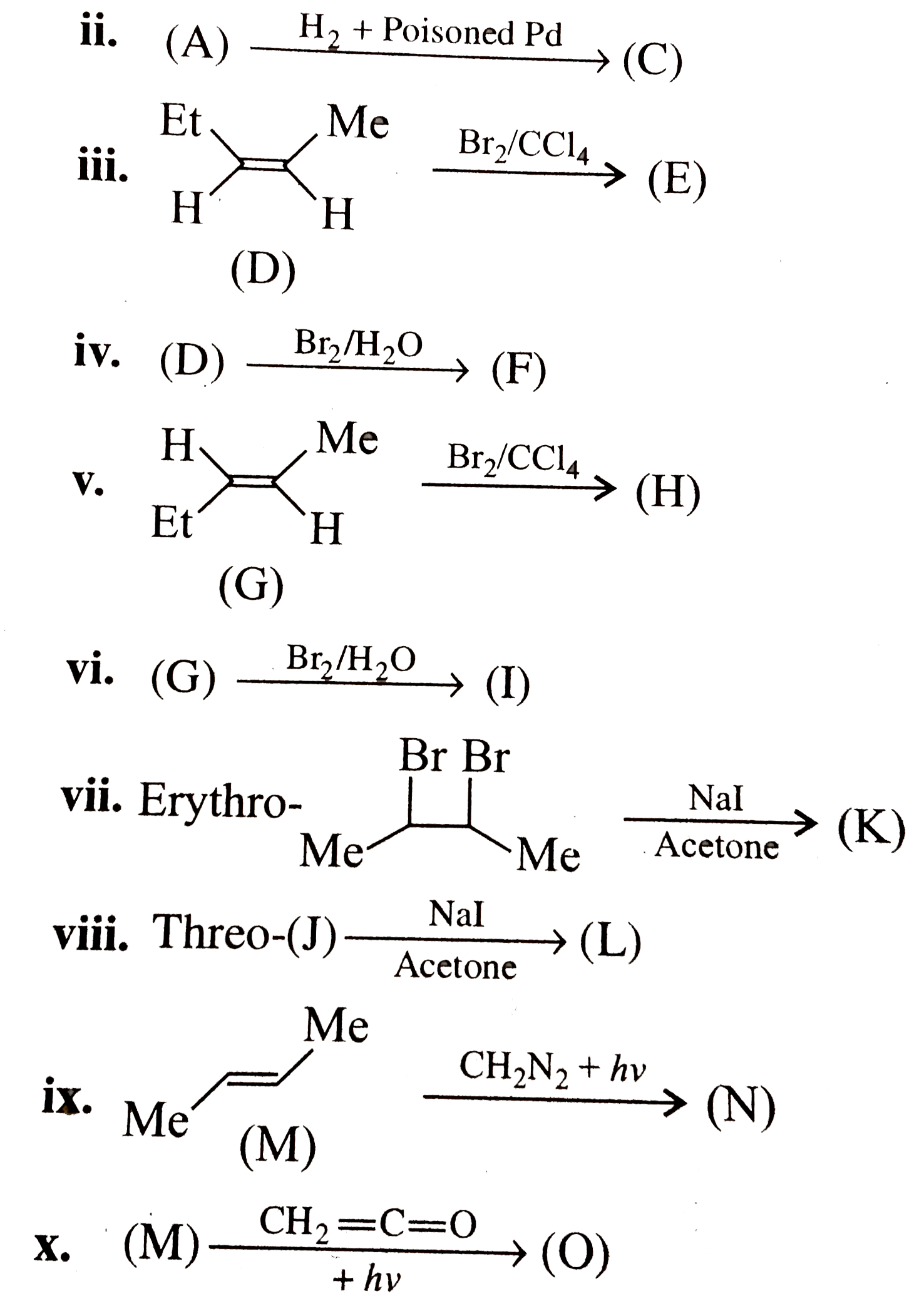 .
.
Which statement is wrong about the reactions (iii) and (iv) ?
View SolutionConsider the following reactions :
`I Me- underset((A))(-=)-Me overset(Na+Liq. NH_(3))underset(EtOH)to (B)`
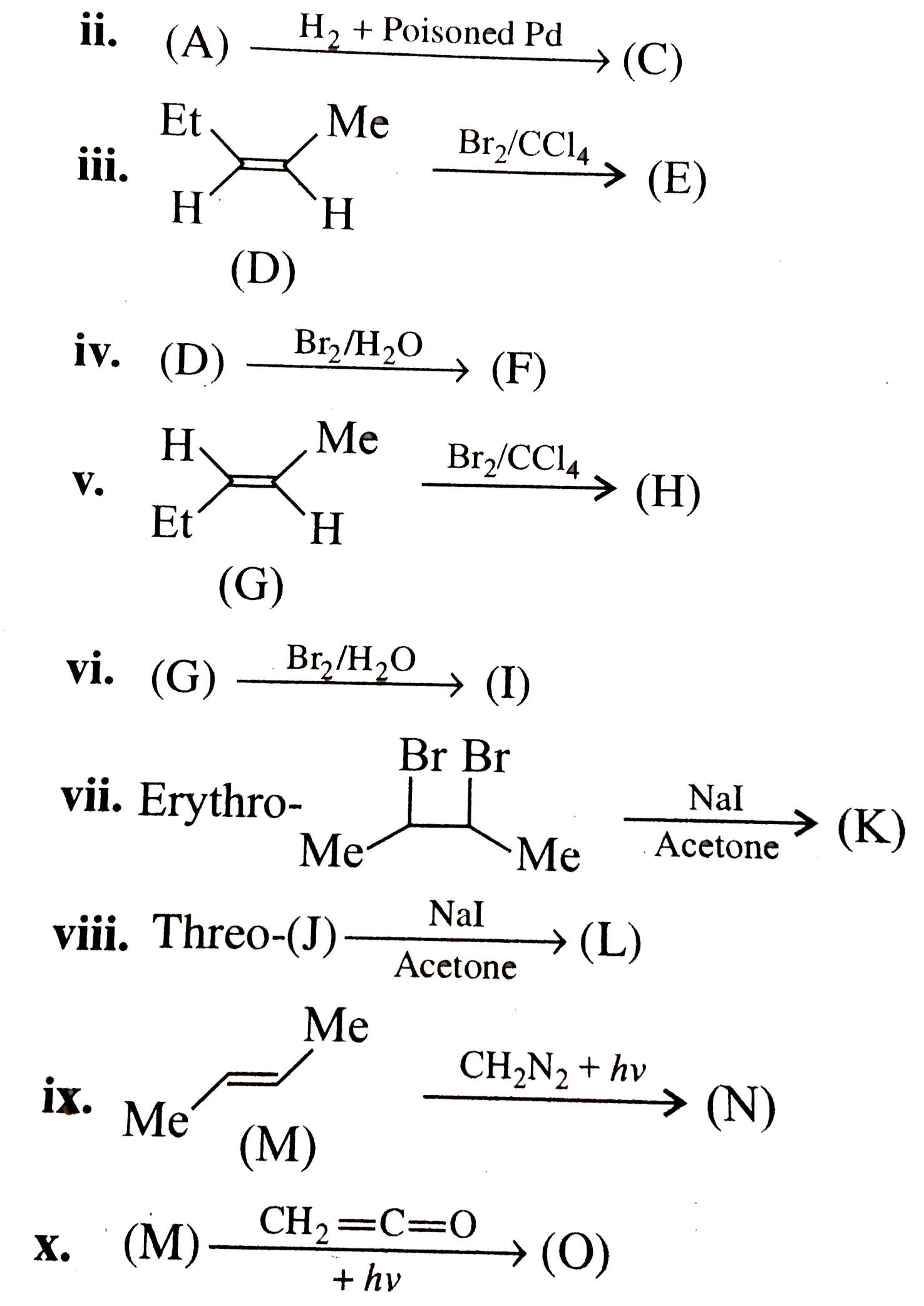 .
.
Which statement is wrong about the reaction (v) and (vi) ?
View SolutionConsider the following reactions :
`I Me- underset((A))(-=)-Me overset(Na+Liq. NH_(3))underset(EtOH)to (B)`
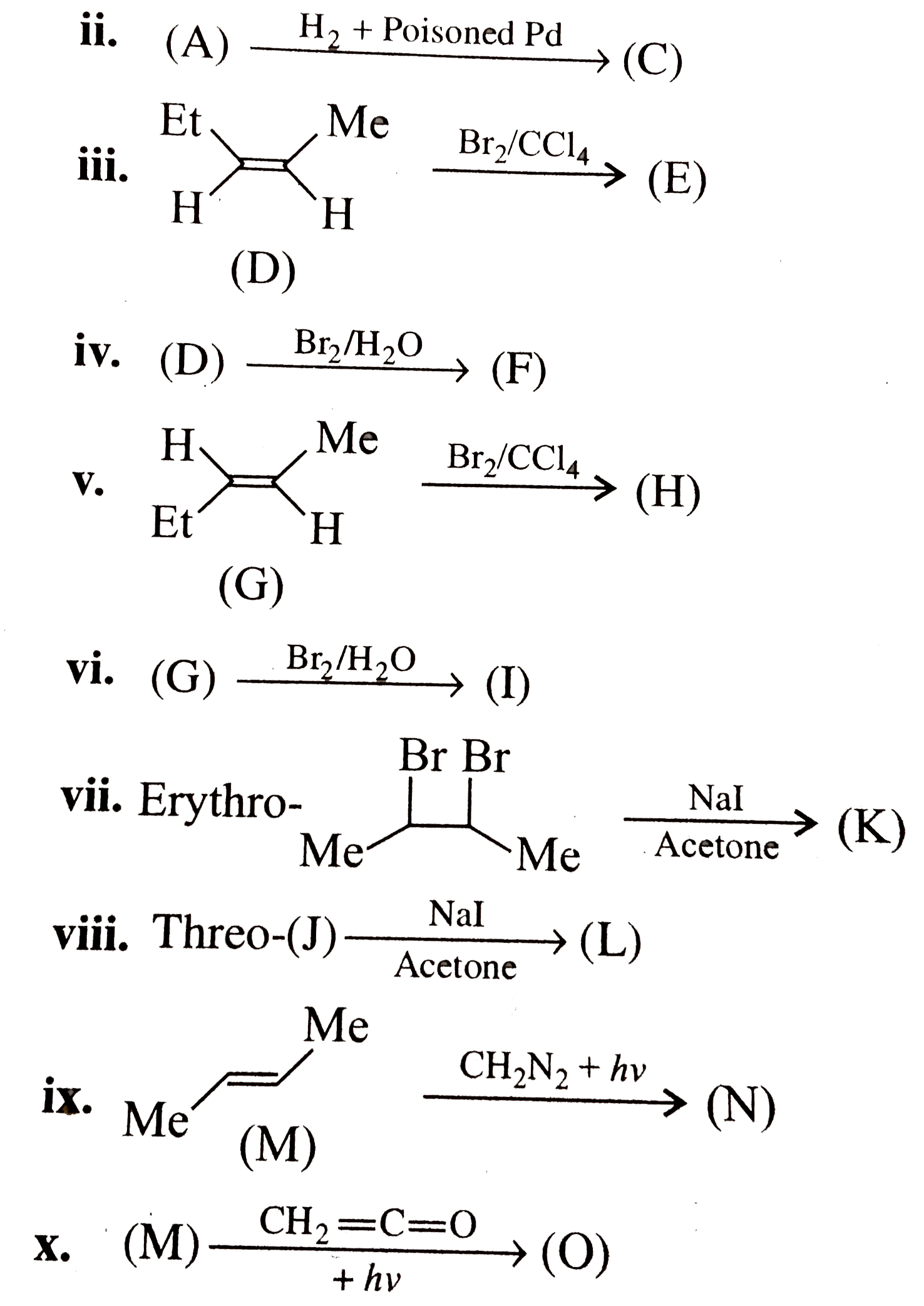 .
.
Which statement is wrong about the reactions (vii) and (viii) ?
View SolutionConsider the following reactions :
`I Me- underset((A))(-=)-Me overset(Na+Liq. NH_(3))underset(EtOH)to (B)`
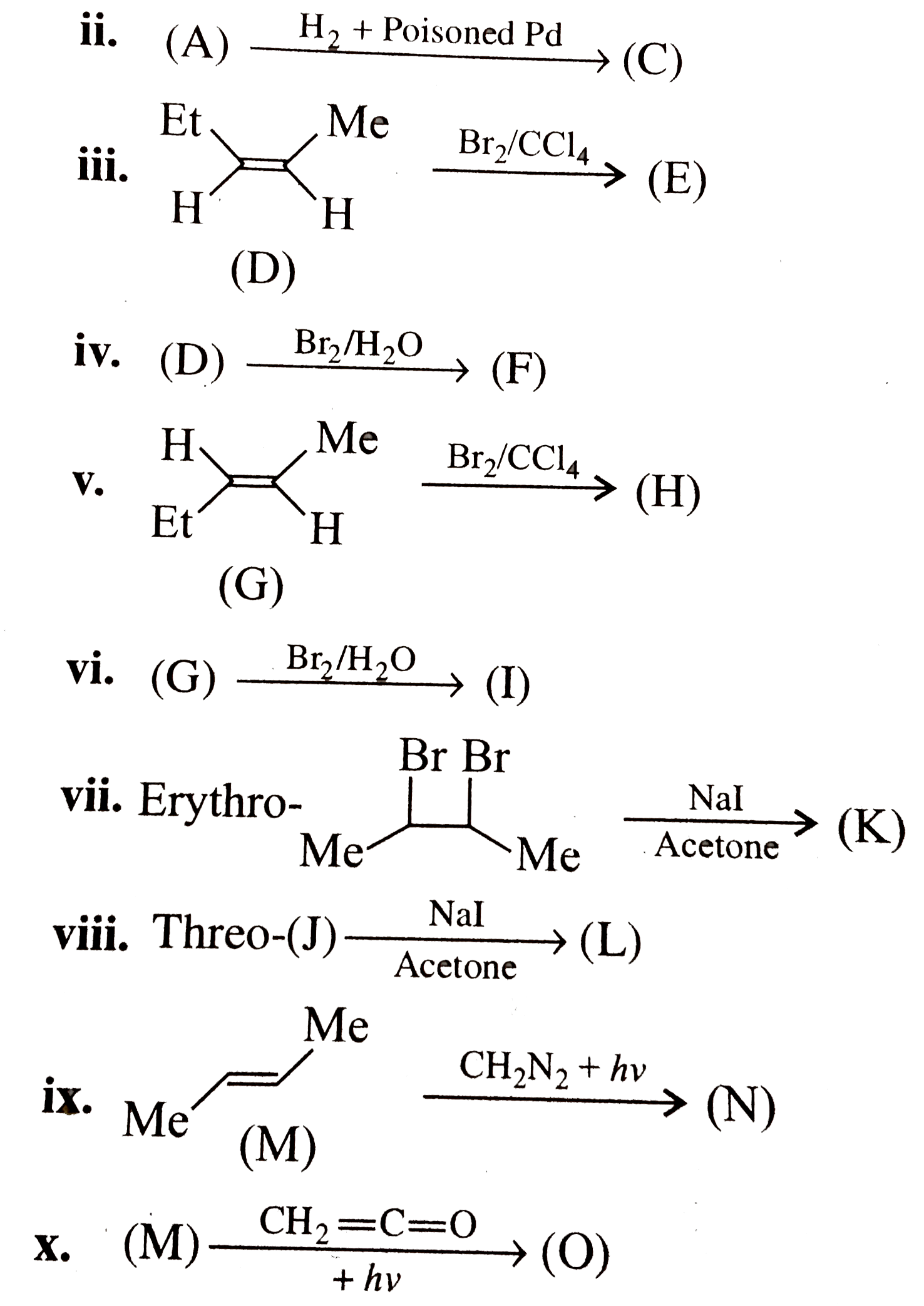 .
.
Which statement is wrong about the reactions (ix) and (x) ?
View Solution
Comprehension questions and complete solutions for chapter ORGANIC REACTION MECHANISM of CENGAGE CHEMISTRY (HINGLISH) of Class 11